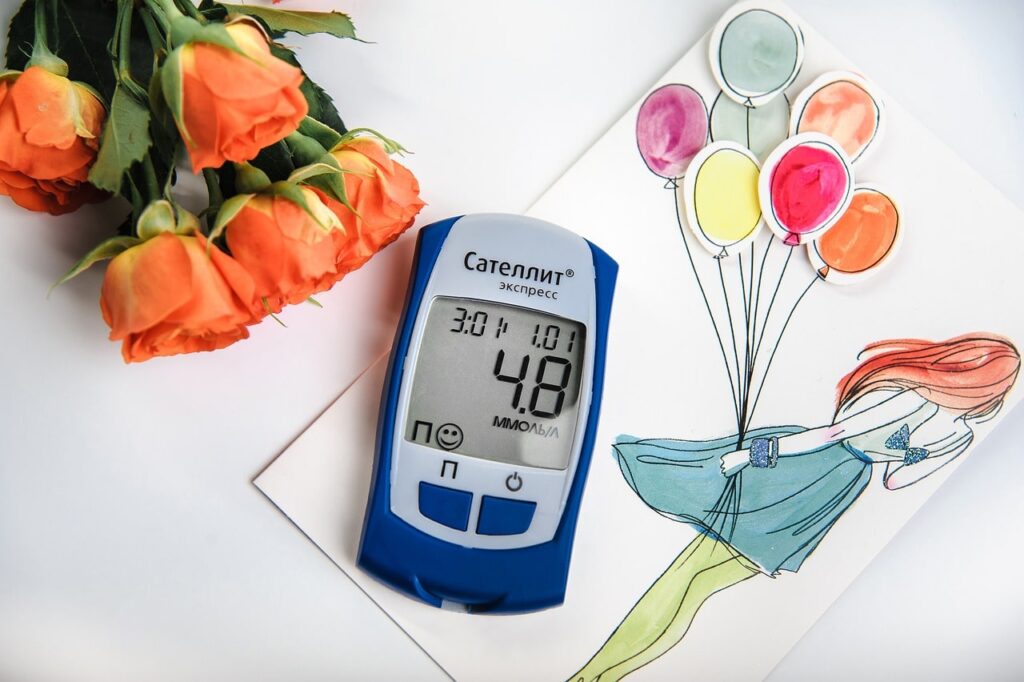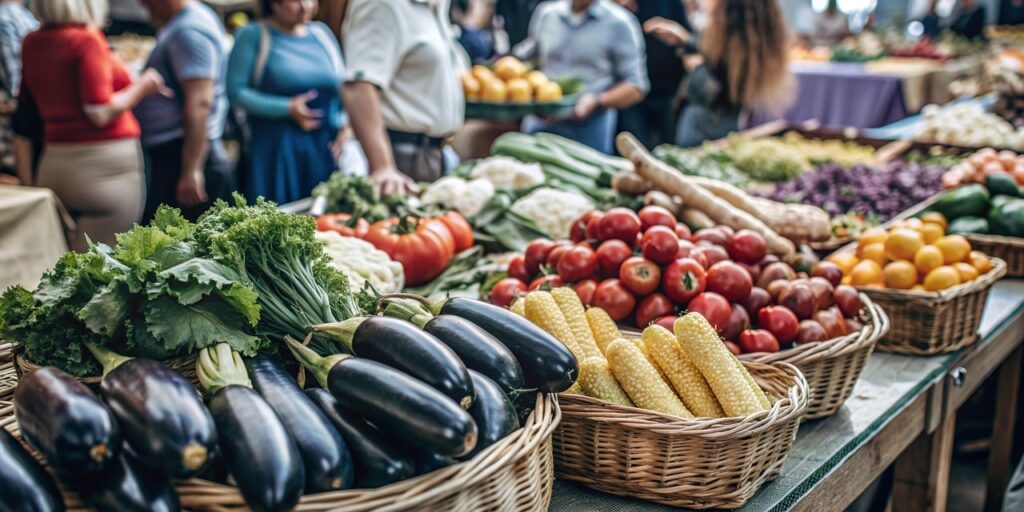Low Glycemic Index Foods for Diabetics

Maintaining stable blood sugar levels is crucial for people with diabetes, and one of the best ways to achieve this is by consuming low glycemic index foods for people with diabetes (GI). These foods are digested and absorbed slowly, preventing sudden spikes in blood glucose.
In this article, we’ll explore:
✅ What is the Glycemic Index?
✅ Why Low-GI Foods Help Manage Diabetes
✅ Best Low-GI Foods for Diabetics
✅ Sample Meal Plan
✅ Foods to Avoid (High-GI Risks)
1. What is the Glycemic Index (GI)?
The Glycemic Index (GI) ranks carbohydrate-containing foods on a scale from 0 to 100 based on how quickly they raise blood sugar levels:
- Low GI (55 or less): Slow digestion, gradual glucose release.
- Medium GI (56-69): Moderate impact on blood sugar.
- High GI (70+): Rapid blood sugar spikes (avoid or limit).
Example:
- Low-GI: Lentils (GI 32)
- Medium-GI: Brown rice (GI 68)
- High-GI: White bread (GI 75)
2. Why Low-GI Foods Help Manage Diabetes
- Prevents blood sugar spikes → Reduces insulin resistance.
- Promotes satiety → Helps with weight management.
- Lowers risk of complications (heart disease, nerve damage).
Studies show that a low-GI diet can improve HbA1c levels by 0.5% in type 2 diabetics (American Diabetes Association).
3. Best Low-GI Foods for Diabetics
✅ Vegetables (GI < 20-50)
- Leafy greens: Spinach, kale, lettuce
- Cruciferous veggies: Broccoli, cauliflower, Brussels sprouts
- Non-starchy options: Zucchini, bell peppers, mushrooms
✅ Fruits (GI < 55)
- Berries: Strawberries (GI 40), blueberries (GI 53)
- Apples (GI 36) & pears (GI 38) (with skin for fiber)
- Citrus fruits: Oranges (GI 43), grapefruit (GI 25)
✅ Whole Grains & Legumes (GI 20-55)
- Oats (GI 55): Steel-cut > instant.
- Quinoa (GI 53): A high-protein alternative to rice.
- Lentils (GI 32): Rich in fiber & plant protein.
- Chickpeas (GI 28): Great for salads & hummus.
✅ Nuts & Seeds (GI < 20)
- Almonds, walnuts, and chia seeds: healthy fats and fiber.
- Peanuts (GI 14): Good for snacking.
✅ Dairy & Alternatives (GI 15-40)
- Greek yogurt (GI 11): High protein, low sugar.
- Unsweetened almond milk (GI 25): Low-carb option.
4. Sample Low-GI Meal Plan for Diabetics
Breakfast:
- Scrambled eggs with spinach and ½ avocado
- Or: Oatmeal with chia seeds & berries
Lunch:
- Grilled chicken + quinoa salad (cucumber, chickpeas, olive oil)
Snack:
- Handful of almonds + apple slices
Dinner:
- Baked salmon + roasted Brussels sprouts + mashed cauliflower
Dessert (occasionally):
- Dark chocolate (85% cocoa, GI 23)
5. High-GI Foods to Limit or Avoid
- White bread, white rice, and pasta (choose whole grain instead).
- Sugary cereals (opt for bran or oats).
- Potatoes (GI 78) (sweet potatoes are better, GI 54).
- Soda and fruit juices (high in fast-digesting sugar).
Final Tips for Low Glycemic Index Foods for Diabetics
✔ Pair carbs with protein/fat (e.g., apple + peanut butter).
✔ Choose whole, unprocessed foods (fiber slows digestion).
✔ Monitor blood sugar responses (individual reactions vary).
Low Glycemic Index Foods for Gestational Diabetes: A Safe Diet Guide
Gestational diabetes mellitus (GDM) occurs when high blood sugar levels develop during pregnancy. Managing diet is crucial to avoid complications for both mother and baby. Low Glycemic Index Foods for Diabetics (GI) help stabilize blood sugar by causing slower, more gradual glucose release.
This guide covers low glycemic index foods for people with diabetes.
✔ Best low-GI foods for gestational diabetes
✔ Foods to avoid
✔ Sample meal plan
Best Low-GI Foods for Gestational Diabetes
1. Non-Starchy Vegetables (GI: 10-30)
- Leafy greens: Spinach, kale, lettuce
- Cruciferous veggies: Broccoli, cauliflower, Brussels sprouts
- Other low-GI choices: Zucchini, bell peppers, cucumbers
✅ Why they help: High in fiber, vitamins, and minerals with minimal blood sugar impact.
2. Whole Grains & Legumes (GI: 30-55)
- Grains: Quinoa, barley, steel-cut oats, whole wheat pasta
- Legumes: Lentils, chickpeas, black beans, kidney beans
✅ Why they help: They are rich in fiber and protein, slowing glucose absorption.
3. Fruits (GI: 30-55)
- Berries: Strawberries, blueberries, raspberries
- Apples & pears (with skin)
- Citrus fruits: Oranges, grapefruit
⚠ Limit high-GI fruits: pineapple, watermelon, and ripe bananas.
✅ Why they help: Provide natural sugars with fiber to prevent spikes.
4. Healthy Proteins & Fats
- Lean proteins: Chicken, turkey, fish, tofu
- Healthy fats: Avocados, nuts (almonds, walnuts), olive oil
✅ Why they help: Proteins and fats slow carb digestion, reducing blood sugar spikes.
5. Dairy & Alternatives (GI: 30-40)
- Greek yogurt (unsweetened)
- Milk (low-fat or almond milk)
- Cheese (in moderation)
✅ Why they help: They provide calcium and protein with minimal sugar impact.
Foods to Avoid with Gestational Diabetes
❌ High-GI carbs: White bread, white rice, pastries, sugary cereals.
❌ Sugary drinks: Soda, fruit juices, and sweetened teas.
❌ Processed snacks: Cookies, chips, and candy.
Sample Low-GI Meal Plan for Gestational Diabetes
Breakfast
- Scrambled eggs with spinach + 1 slice whole-grain toast
- 1 small apple with almond butter
Snack
- Greek yogurt with chia seeds & berries
Lunch
- Grilled chicken salad with quinoa, avocado, and olive oil dressing
Snack
- Handful of almonds and carrot sticks
Dinner
- Baked salmon with steamed broccoli & lentils
Evening Snack (if needed)
- Cottage cheese with cinnamon
Key Takeaways
✔ Low-GI foods help control blood sugar in gestational diabetes.
✔ Focus on fiber-rich veggies, whole grains, lean proteins, and healthy fats.
✔ Avoid processed sugars and refined carbs.
✔ Small, frequent meals prevent blood sugar spikes.
Final Tip: Constantly monitor blood glucose levels and consult a doctor or dietitian for personalized advice.
FAQs: Low Glycemic Index Foods for Diabetics
1. What is the Glycemic Index (GI)?
The Glycemic Index (GI) ranks carbohydrate-containing foods on a scale of 0–100 based on how quickly they raise blood sugar levels after eating.
- Low GI (55 or less): Slow digestion, gradual sugar release (e.g., lentils, non-starchy veggies).
- Medium GI (56–69): Moderate impact (e.g., whole wheat bread).
- High GI (70+): Rapid blood sugar spikes (e.g., white bread, sugary cereals).
2. Why Should Diabetics Eat Low-GI Foods?
- Stabilizes blood sugar: Prevents sharp spikes and crashes.
- Improves insulin sensitivity: Helps manage type 2 diabetes.
- Promotes satiety: Reduces cravings and overeating.
3. What Are the Best Low-GI Foods for Diabetics?
Vegetables (GI: <30)
- Leafy greens (spinach, kale)
- Broccoli, cauliflower
- Carrots (raw), tomatoes
Fruits (GI: 30–50)
- Apples, pears
- Berries (strawberries, blueberries)
- Cherries, oranges
Legumes & Pulses (GI: 20–40)
- Lentils, chickpeas
- Black beans, kidney beans
Whole Grains (GI: 30–55)
- Quinoa, barley
- Steel-cut oats
- Whole-grain pasta (al dente)
Nuts & Seeds (GI: <20)
- Almonds, walnuts
- Chia seeds, flaxseeds
4. Can Diabetics Eat Potatoes or Rice?
- Potatoes: High GI (70+), but cooking potatoes lowers their GI. Opt for sweet potatoes (GI: 44–54).
- Rice: White rice (GI: 73) spikes blood sugar. Choose basmati rice (GI: 50–58) or cauliflower rice (GI: 15).
5. Does Cooking Affect GI?
Yes!
- Overcooking pasta/rice raises GI. Cook al dente.
- Pairing carbs with protein/fiber (e.g., beans and rice) lowers GI.
6. Are Low-GI Foods Always Healthy?
Not necessarily. Some fatty foods (e.g., chocolate) have a low GI but are high in calories. Focus on whole, unprocessed foods.
7. Sample Low-GI Meal Plan for Diabetics
- Breakfast: Greek yogurt + berries + chia seeds.
- Lunch: Quinoa salad with chickpeas, veggies, and olive oil.
- Snack: Apple with almond butter.
- Dinner: Grilled salmon + roasted broccoli + ½ cup brown rice.
8. Where Can I Find GI Values for Foods?
Refer to Harvard Medical School’s GI database or the University of Sydney’s GI Finder.
9. Should I Only Eat Low-GI Foods?
Balance is key! Combine low-GI foods with:
- Lean protein (chicken, fish).
- Healthy fats (avocado, olive oil).
10. Do Low-GI Foods Help with Weight Loss?

Yes! They keep you full longer, reducing calorie intake. Studies link low-GI diets to reduced belly fat (American Journal of Clinical Nutrition, 2019).
